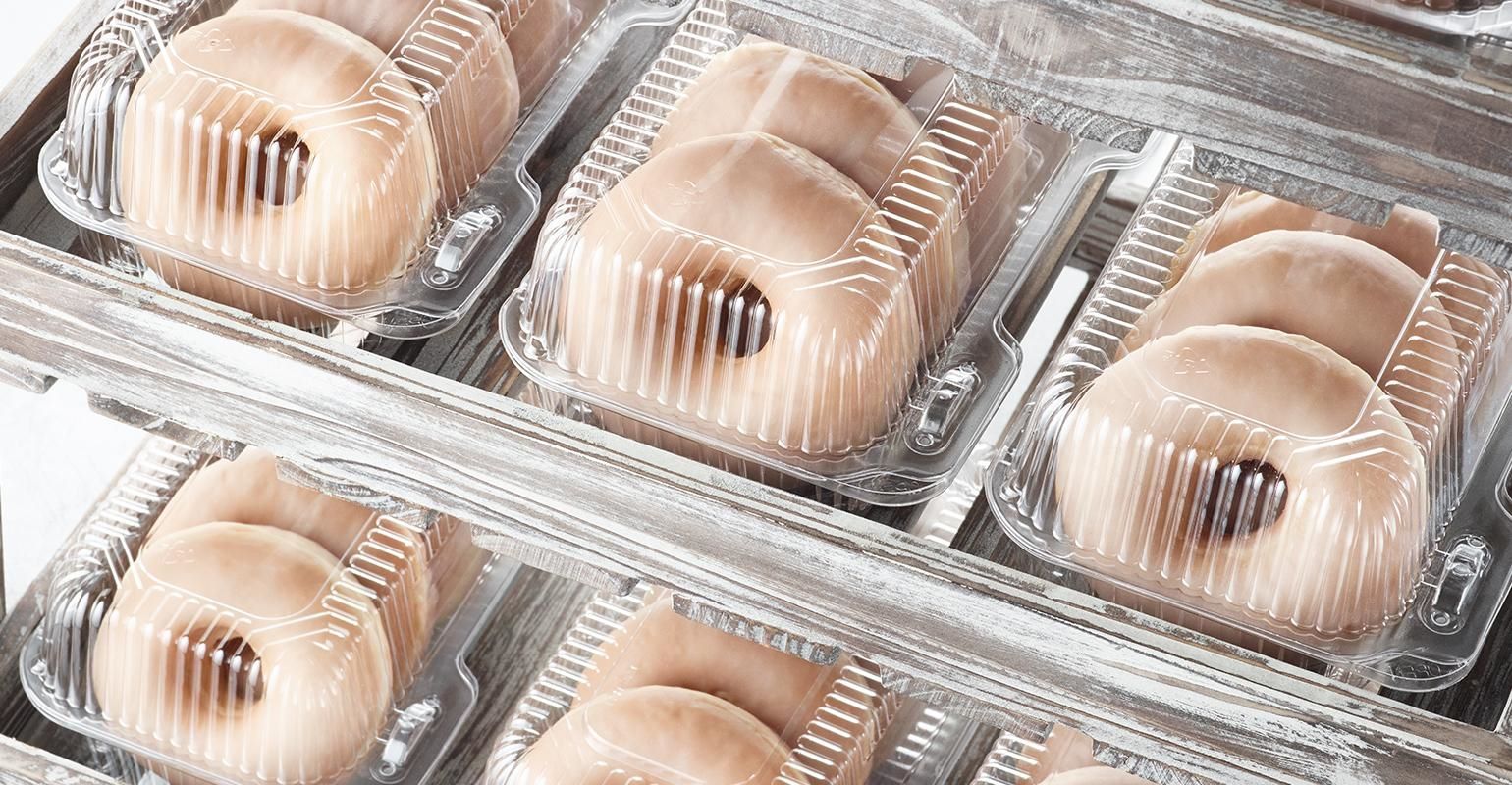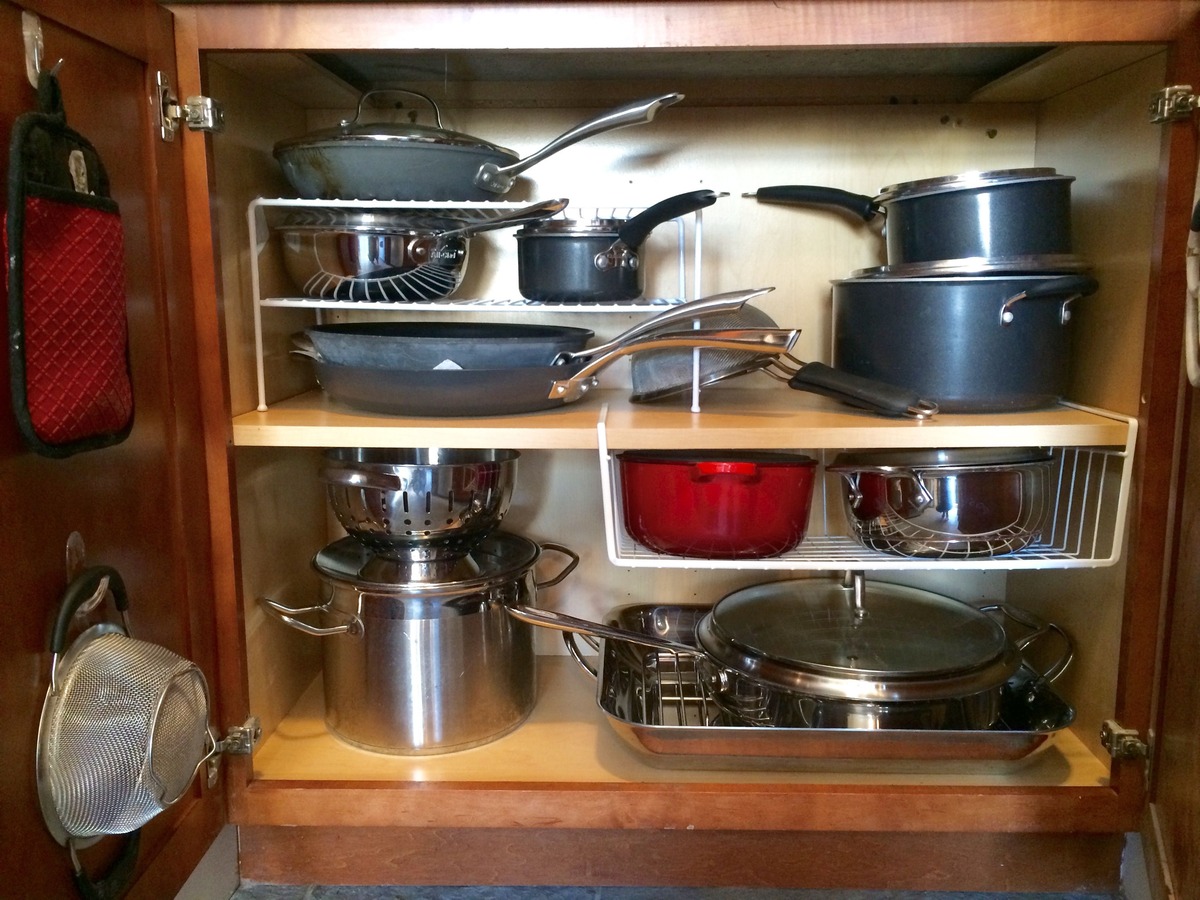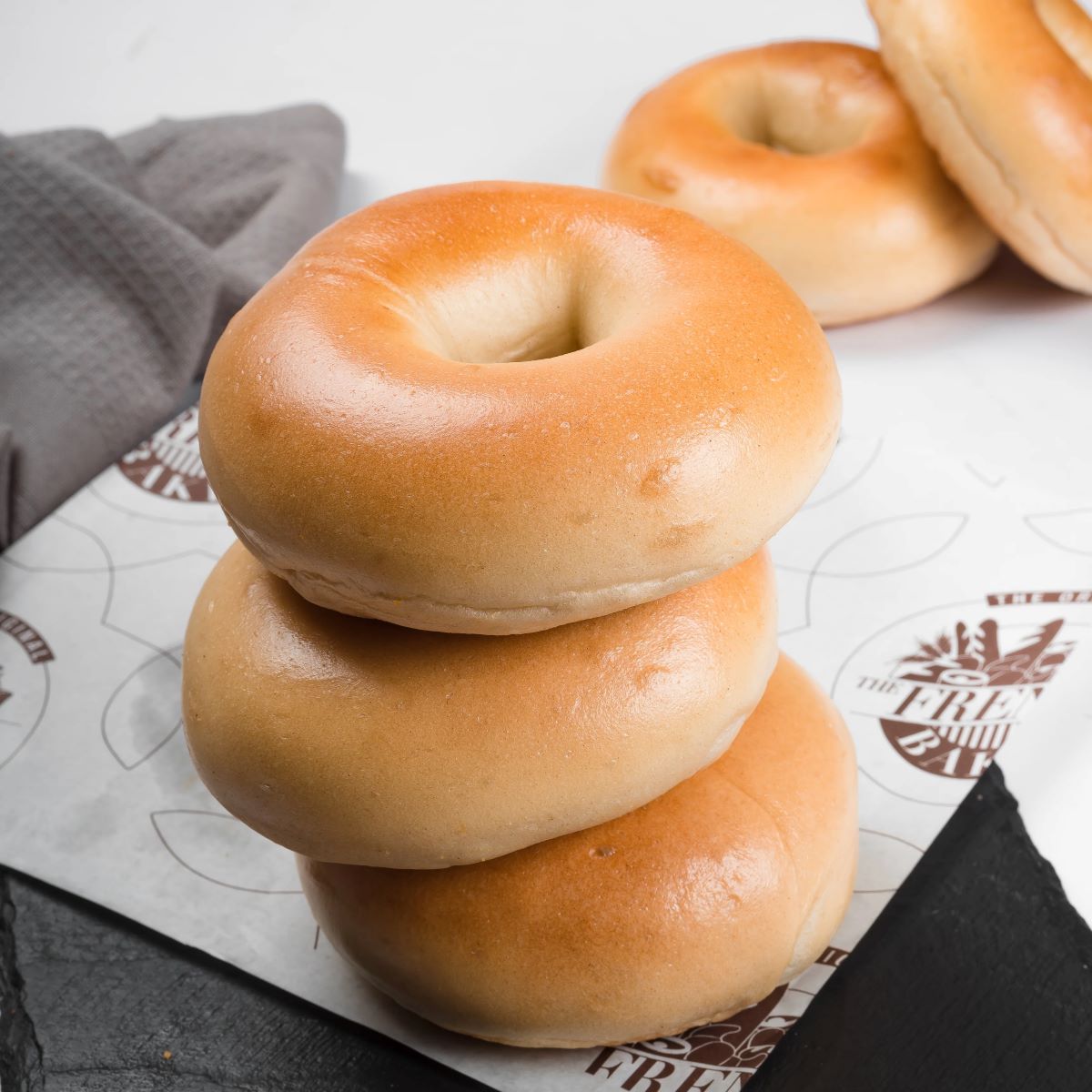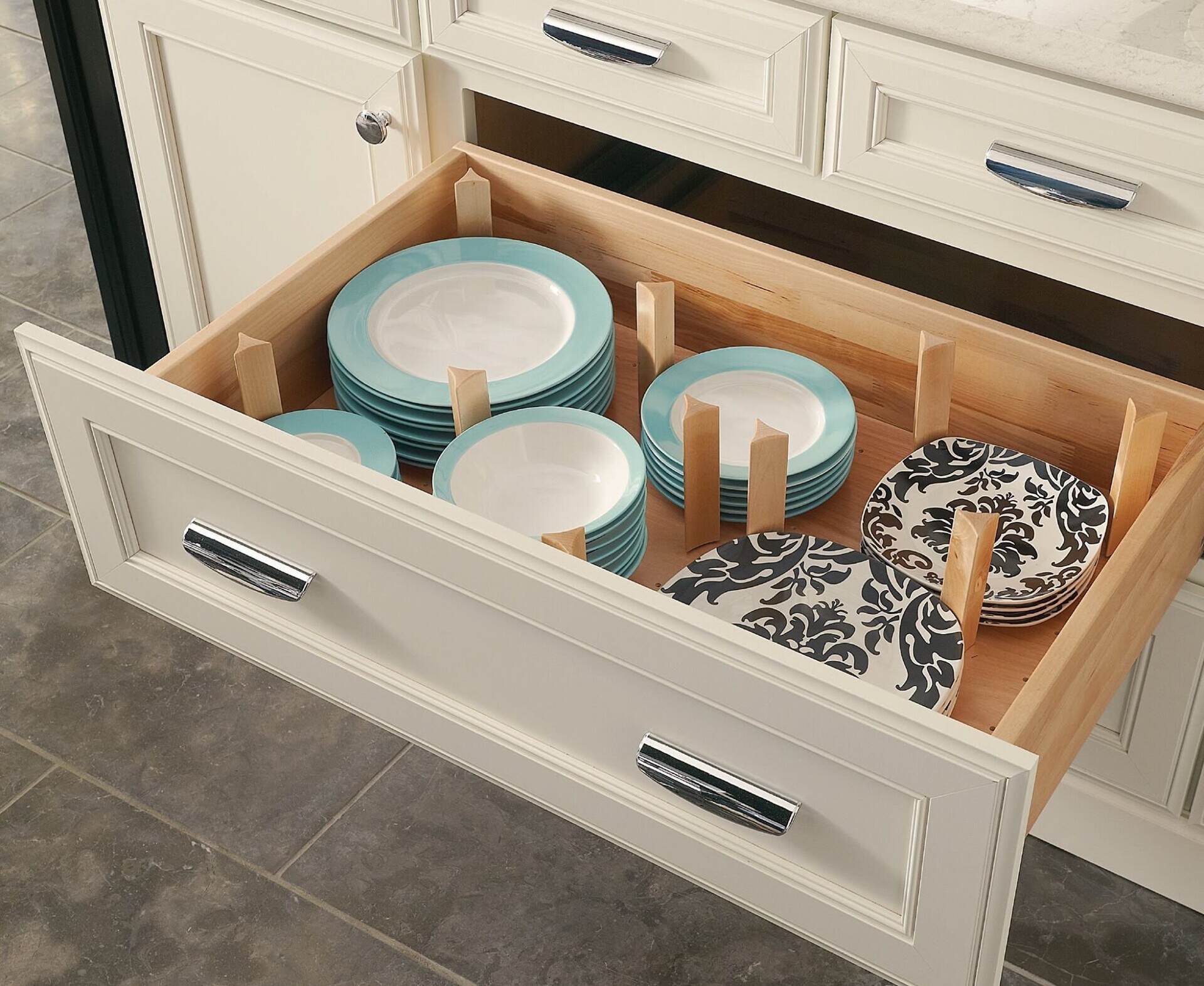

Articles
How To Store Doughnuts
Modified: January 7, 2024
Explore our collection of helpful articles on how to store doughnuts and keep them fresh for longer. Learn expert tips and tricks to maintain their deliciousness!
(Many of the links in this article redirect to a specific reviewed product. Your purchase of these products through affiliate links helps to generate commission for Storables.com, at no extra cost. Learn more)
Introduction
There’s nothing quite like sinking your teeth into a soft, fluffy doughnut, whether it’s glazed, filled, or sprinkled with your favorite toppings. These delectable treats are best enjoyed fresh out of the fryer or oven, but what do you do when you have leftovers? Fear not, for we have the ultimate guide on how to store doughnuts to keep them tasting as delicious as the day you bought them.
Properly storing your doughnuts is essential to maintain their texture, flavor, and overall quality. Whether you made them at home or bought them from a bakery, the right storage methods can help prolong their shelf life and prevent them from becoming stale or soggy.
In this article, we will walk you through the step-by-step process of storing doughnuts to ensure that they stay fresh and tasty for as long as possible. From choosing the right container to reheating them when you’re ready to indulge, we’ve got you covered. So let’s dive in and learn how to properly store your beloved doughnuts.
Key Takeaways:
- Keep your doughnuts fresh by choosing the right airtight container and letting them cool completely before storage. Whether at room temperature or in the refrigerator, avoid freezing for the best taste and texture.
- Reheat stored doughnuts in the oven, microwave, or air fryer to bring back their delightful flavors. Properly dispose of any stale or moldy doughnuts to ensure safety and well-being.
Read more: How To Store Doughnuts Overnight
Step 1: Choose the Right Container for Storage
When it comes to storing doughnuts, the container you choose can make a significant difference in maintaining their freshness. The ideal container should be airtight and able to protect the doughnuts from exposure to air, light, and moisture. Here are a few options to consider:
- Plastic Food Storage Bags: These bags are a convenient option for storing individual doughnuts. Make sure to squeeze out as much air as possible before sealing the bag tightly.
- Plastic Wrap: If you don’t have any storage bags available, you can tightly wrap the doughnuts with plastic wrap. This will help create a barrier against air and moisture.
- Tupperware or Plastic Containers: These containers are great for storing multiple doughnuts at once. Look for containers with a snug-fitting lid that will create a seal.
- Cardboard Bakery Boxes: If you purchased your doughnuts from a bakery, they may have come in a cardboard box. You can reuse this box to store the remaining doughnuts, as long as it’s in good condition.
Remember to choose a container that is clean and free from any lingering odors. This will help ensure that your doughnuts retain their original flavor and don’t absorb any unwanted smells.
Once you’ve chosen the right container, it’s time to move on to the next step: letting the doughnuts cool completely.
Step 2: Let the Doughnuts Cool Completely
Before you can store your doughnuts, it’s crucial to let them cool completely. If you attempt to store them while they’re still warm, condensation can form inside the container, resulting in soggy doughnuts.
After frying or baking the doughnuts, place them on a wire rack or a paper towel-lined plate to cool. Allow them to sit undisturbed for at least 20-30 minutes, or until they are completely cool to the touch.
If you’re in a hurry and can’t wait for them to cool naturally, you can speed up the process by placing the doughnuts in the refrigerator for a few minutes. However, be sure not to leave them in the refrigerator for too long, as it can alter their texture.
It’s essential to note that glaze or icing can melt if you store warm doughnuts directly in a sealed container. This can lead to a sticky mess and compromise the quality of the doughnuts. Therefore, make sure to cool the doughnuts completely to avoid any issues.
Once your doughnuts have reached room temperature, it’s time to move on to the next step: placing them in a storage container.
Step 3: Place the Doughnuts in a Storage Container
Now that your doughnuts have cooled down, it’s time to transfer them to a suitable storage container. This step is critical in maintaining their freshness and protecting them from external elements.
If you are using plastic food storage bags or plastic wrap, place each doughnut individually, ensuring they are not touching. This will prevent them from sticking together. Squeeze out as much air as possible before sealing the bag or wrapping with plastic wrap tightly.
If you have opted for Tupperware or plastic containers, arrange the doughnuts in a single layer, leaving some space between each one. This will prevent them from getting squished or crushed.
When using a cardboard bakery box, line the box with parchment paper or place the doughnuts on a plate before transferring them. By doing this, you add an extra layer of protection against moisture and retain the integrity of the doughnuts.
Whichever container you choose, make sure to seal it tightly to prevent air and moisture from entering. This will help maintain the texture and flavor of the doughnuts for a longer period.
Now that your doughnuts are securely stored in a container, it’s time to move on to the next step: deciding where to store them.
Step 4: Store at Room Temperature or in the Refrigerator
When it comes to choosing the storage location for your doughnuts, there are two primary options: storing them at room temperature or in the refrigerator. The choice depends on the type of doughnut and your personal preference.
Room Temperature: If you plan to consume the doughnuts within 1-2 days and they don’t have any perishable fillings (such as cream or custard), storing them at room temperature is the way to go. Choose a cool, dry spot in your kitchen away from direct sunlight or heat sources. Ensure that the container is sealed properly to prevent any air exposure.
Refrigerator: If you want to extend the shelf life of your doughnuts or they contain perishable fillings, storing them in the refrigerator is a safer option. Place the sealed container in the refrigerator, preferably towards the back where the temperature is more stable. Cold temperatures will help slow down the staling process, but keep in mind that the doughnuts may become slightly denser.
It’s important to note that some doughnuts, like cake or yeast-based ones, tend to dry out faster in the refrigerator. If you find that your doughnuts become too dry after refrigeration, it’s best to store them at room temperature instead.
Regardless of whether you choose room temperature or the refrigerator, make sure to keep the doughnuts away from strong odors as they can easily absorb them.
Now that you have determined the storage location for your doughnuts, let’s move on to the next step: avoiding freezing doughnuts.
Store doughnuts in an airtight container at room temperature for up to two days. For longer storage, freeze them in a resealable plastic bag for up to three months.
Read more: How To Store Krispy Kreme Doughnuts
Step 5: Avoid Freezing Doughnuts
While freezing doughnuts might seem like a convenient option for long-term storage, it can greatly affect their taste and texture. Freezing can lead to a loss of moisture, resulting in dry and less flavorful doughnuts.
If you anticipate having leftovers that you won’t be able to consume within a few days, it’s best to consider alternative options rather than freezing them. Freezing is generally not recommended for doughnuts, especially those with fillings or glazes.
If you still find yourself with excess doughnuts and freezing is your only option, here’s how to do it properly:
- Allow the doughnuts to cool completely before freezing.
- Place them in airtight freezer-safe containers or heavy-duty freezer bags. Ensure that there is no excess air inside the containers or bags.
- Label the containers with the date of freezing to keep track of their freshness.
- Place the doughnuts in the freezer, preferably in a single layer to prevent them from sticking together.
When you’re ready to enjoy the frozen doughnuts, it’s important to thaw them properly. Remove them from the freezer and let them thaw at room temperature. Avoid microwaving or reheating them directly from frozen, as this can result in uneven reheating and a soggy texture.
Keep in mind that the quality of the doughnuts may not be the same as when they were freshly made. Freezing is a last resort and it’s always best to consume doughnuts when they are at their peak freshness.
With freezing out of the picture, let’s move on to the next step: reheating stored doughnuts.
Step 6: Reheating Stored Doughnuts
Reheating stored doughnuts can help restore their freshness and revive their flavor. Whether you’ve stored them at room temperature or in the refrigerator, here are a few methods to consider when reheating:
- Oven: Preheat your oven to 350°F (175°C). Place the doughnuts on a baking sheet and heat them for about 5-10 minutes until they are warmed through. This method works well for cake doughnuts and can help restore their texture.
- Microwave: If you’re looking for a quick and convenient option, the microwave can be used to reheat doughnuts. Place one doughnut at a time on a microwave-safe plate and heat it in 10-15 second intervals until it reaches your desired temperature. Be careful not to overheat, as it can make the doughnuts tough or chewy.
- Air Fryer: An air fryer is another excellent option for reheating doughnuts. Preheat the air fryer to 350°F (175°C), place the doughnuts inside the basket, and heat them for a few minutes until warmed through. The air fryer can help restore the crispness of glazed doughnuts.
Remember to keep an eye on the doughnuts while reheating to avoid overheating or burning them. Test the temperature before biting into the doughnut to ensure it’s at the desired warmth.
Reheating can rejuvenate the flavor and texture of the doughnuts, but it’s always best to consume them as soon as possible after reheating for the best taste and quality.
Now that your doughnuts are reheated and ready to enjoy, it’s crucial to know how to properly dispose of any stale or moldy doughnuts.
Step 7: Properly Dispose of Stale or Moldy Doughnuts
While we strive to store our doughnuts properly, there may come a time when some of them become stale or develop mold. When this happens, it’s important to dispose of them safely and responsibly.
If you notice that your doughnuts have become stale or dry, but there is no sign of mold, they may still be edible, although not as enjoyable. You can repurpose them by transforming them into bread pudding, French toast, or even as a topping for ice cream.
However, if your doughnuts show signs of mold growth, it’s crucial to discard them immediately. Mold can produce harmful toxins and consuming moldy food can lead to illness. Do not attempt to salvage or cut off the moldy parts, as this does not eliminate the toxins that may have spread throughout the doughnut.
When disposing of your stale or moldy doughnuts, place them in a sealed bag before throwing them in the trash. This helps prevent the spread of mold spores and minimizes any potential odor. Avoid composting doughnuts, as the high sugar and fat content can attract pests and create an unpleasant environment.
By properly disposing of any stale or moldy doughnuts, you ensure the safety and well-being of yourself and others who may come into contact with them.
With these steps, you now have a comprehensive guide on how to store your doughnuts and keep them fresh and delicious. Remember to choose the right container, let them cool, store them appropriately, and avoid freezing whenever possible. And when it’s time to enjoy them, reheating techniques can help bring back their delightful flavors. Should any doughnuts go stale or develop mold, dispose of them safely. Now, go ahead and indulge in your stored doughnuts with confidence!
Conclusion
Storing doughnuts properly is essential to maintain their texture, flavor, and overall quality. By following the steps outlined in this guide, you can ensure that your doughnuts stay fresh and delicious for as long as possible.
Choosing the right container, letting the doughnuts cool completely, and placing them in a storage container are the initial steps to preserve their freshness. The decision to store them at room temperature or in the refrigerator depends on the type of doughnut and your personal preference.
Avoiding freezing doughnuts is highly recommended, as it can significantly affect their taste and texture. If you must freeze them, be sure to thaw them properly before enjoying.
When you’re ready to indulge, reheating stored doughnuts can help bring back their delightful flavors. Whether using an oven, microwave, or air fryer, it’s important to pay attention to the heating process to avoid overcooking or drying out the doughnuts.
Lastly, proper disposal of any stale or moldy doughnuts is crucial for the safety and well-being of yourself and others. Seal them in a bag before throwing them in the trash to prevent the spread of mold spores.
Now that you have a comprehensive understanding of how to store doughnuts, you can enjoy these delectable treats without worrying about their freshness. So go ahead, treat yourself to a sweet delight knowing that your doughnuts will be just as delicious when you’re ready to savor them!
Frequently Asked Questions about How To Store Doughnuts
Was this page helpful?
At Storables.com, we guarantee accurate and reliable information. Our content, validated by Expert Board Contributors, is crafted following stringent Editorial Policies. We're committed to providing you with well-researched, expert-backed insights for all your informational needs.















0 thoughts on “How To Store Doughnuts”